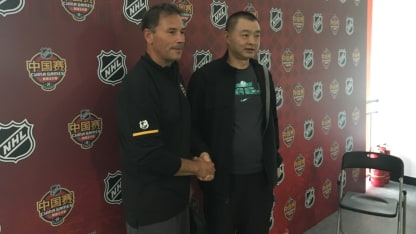To maximize its investment in growing the game in China, particularly at the grassroots level, the League feels the key to do that most effectively is to develop coaches.
"When we first started we were really focused on the player clinics, and what we realized was with the player clinic you're able to get to 25, 30, 40 kids. But with the coach's clinic you're able to get to a couple hundred kids, or thousands of kids, because these coaches can impart the right messaging and the right stuff that we do in the way we teach the game," NHL executive vice president of media and international strategies David Proper said. "I suspect that what we need is to continue to grow that coaching education. When we come and watch kids play, the talent level is there. So now it's about teaching them all the way up through the ranks how to continue to build on that."
Through a translator, MacLean, Lacroix and Tanguay made presentations on drills, how to teach proper shooting, passing and skating techniques, and how most effectively to work with kids to keep the game interesting and fun so they want to keep coming back on the ice.
They also broke into smaller groups for question-and-answer sessions.
"Getting to the players, if you don't know how to structure practice properly, it will be hard," Lacroix said. "I told the coaches you need to have a plan. You need to be the best prepared coach out there. You need to come in, have a plan, explain the plan, demonstrate it to your kids, let them do it and then you need to stop and correct it as may be so they can execute it in games. But that's a four- or five-step process in order to get it done right."





